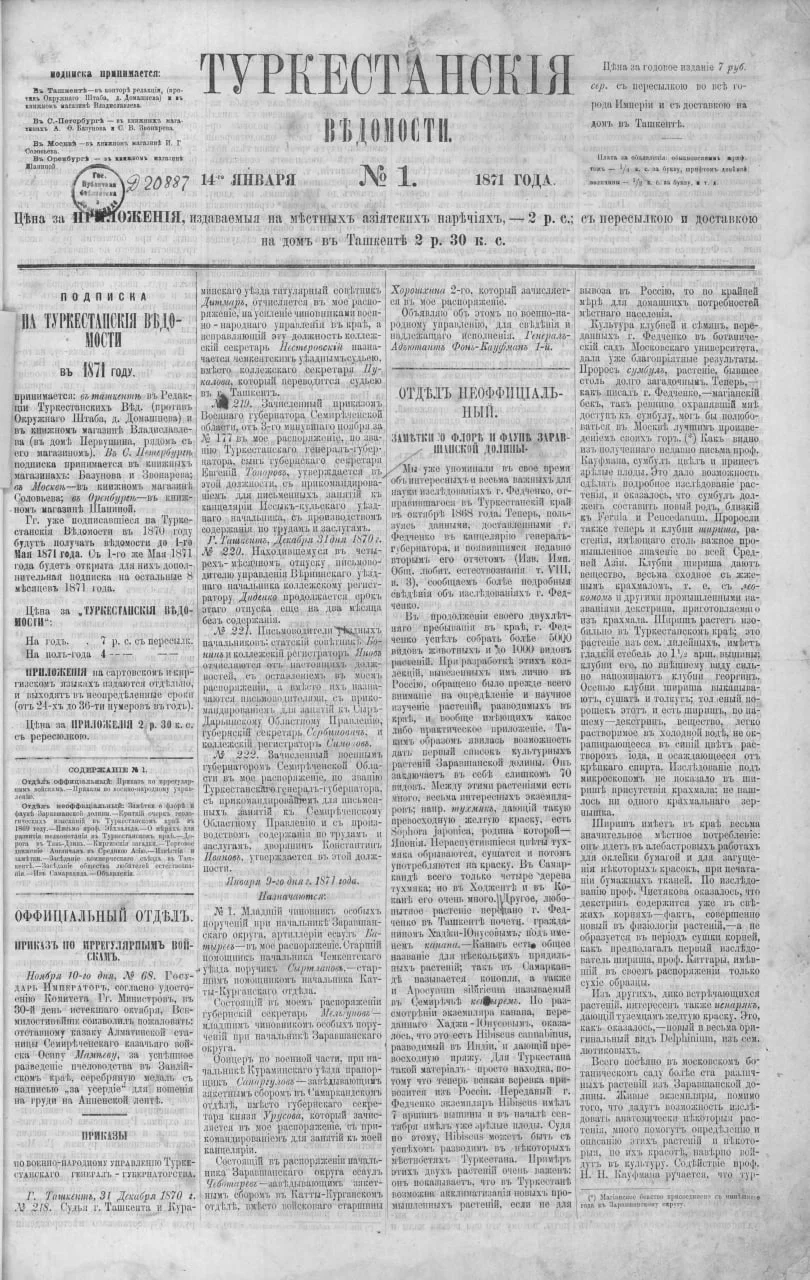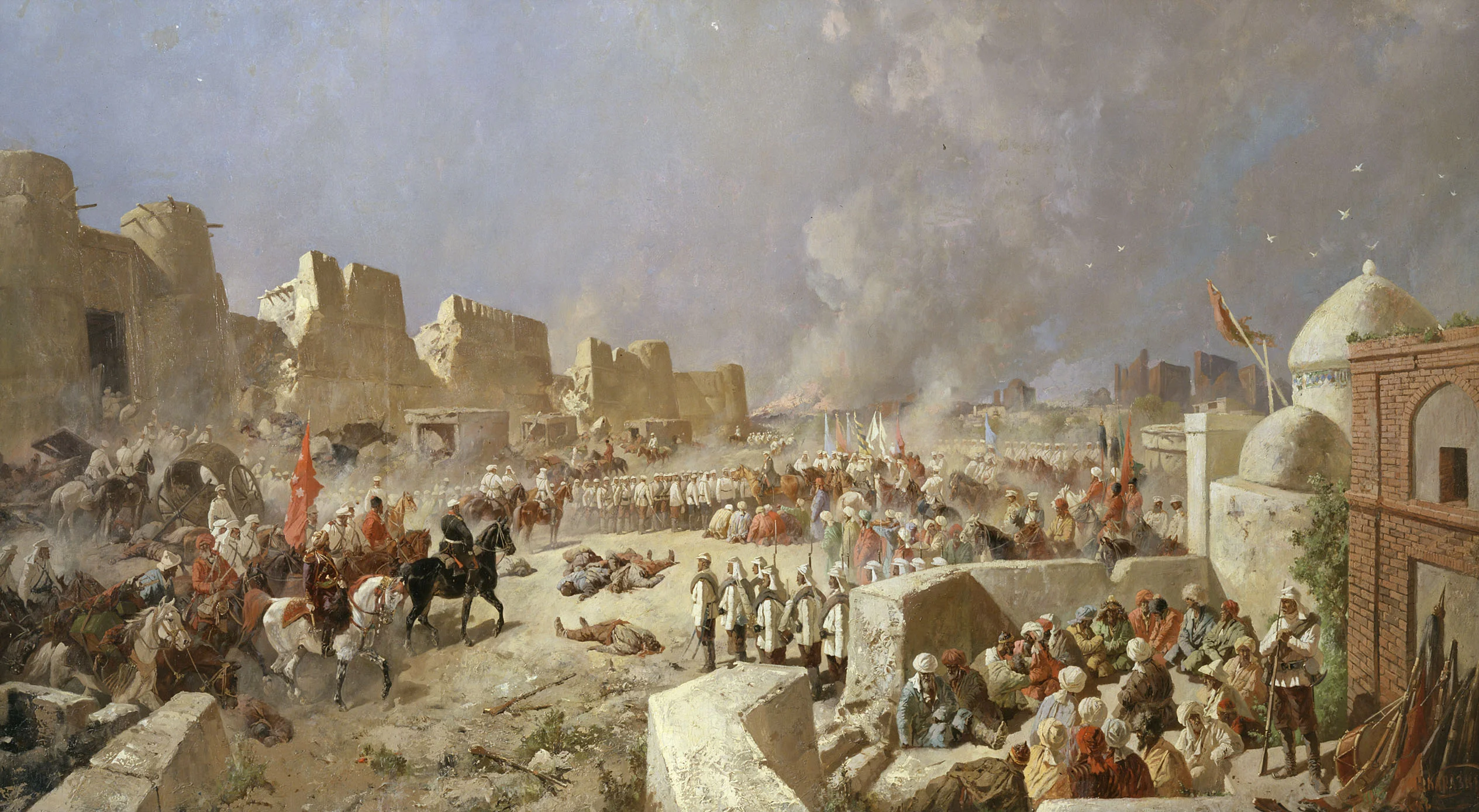From the second half of the nineteenth century, newspapers and magazines began to be published in the steppe and Turkestan regions, including some in Kazakh. Some of these publications served as the voice and transmitter of official government ideology, which was first tsarist and then Soviet.
However, this period was also marked by a great surge in intellectual zeal and activity from Kazakh thinkers, which contributed to the emergence of various socio-political, literary, and satirical publications. Qalam invites you to explore snippets from Kazakh publishing culture and history, offering a glimpse into the important issues of the past.
In the second half of the 19th century and the early 20th century, Russia and Britain were engaged in an intense geopolitical rivalry over control of Central Asia, including Afghanistan. The British Empire sought to protect its holdings in India, fearing Russia's southward expansion, while the Russian Empire extended its influence in Central Asia to strengthen its southern borders and gain access to important trade routes.
Naturally, Russia presented its goals somewhat differently to the local population, emphasizing its civilizing mission and the creation of conditions for the prosperity of the local people. As part of these efforts, the newspaper Turkestanskie Vedomosti was launched to serve this purpose.
In Issue No. 1 of 1871, the paper featured a piece vividly describing the benefits of Russian military expansion for the residents of Samarkand and its surroundings. However, the author, either intentionally or unintentionally, let slip that the conquered lands brought economic benefits primarily to the metropole:

The Turkestanskie Vedomosti newspaper
As is known, in August of last year, a portion of the mountainous region lying south of Samarkand and bordering our territories—namely, the bekdoms of Farab, Magian, and Kishtut—was annexed to the Zarafshan District. The newly annexed lands hold significant importance for Russian possessions in Central Asia, particularly for the towns and villages in the Miankal Valley (Samarkand and Katty-Kurgan divisions).
This year, of course, we have received a rather modest income from these lands, as the entirety of the tax collection and the majority of the kharaj dutiesi
However, although significant revenue from the lands of Kishtut, Magian, and Farab cannot generally be expected, all other benefits of annexing these territories are quite tangible. With the removal of the beks from these areas—who had greatly troubled our border villages and disturbed the population—our southeastern border can now enjoy complete tranquility, a fact already evident in such a short time. The population of the Zarafshan District stands to gain greatly from the newfound opportunities to exploit the natural wealth of their land for their own benefit, under the personal security and protection afforded by Russian authority.
Naturally, it was also immediately proposed to develop new profitable industries:
With the discovery of the forest wealth in the Kishtut and Magian mountains, it will become possible to have an ample supply of fuel at a much lower cost than current prices. Logging and rafting timber along the Zarafshan River are traditional livelihoods for the mountain population. Now, with the removal of the beks, who had previously hindered the development of this trade, it can be expected that timber rafting will become much more successful and profitable.
Major General Abramov has already instructed the head of the Samarkand Division to once again inspect the Magian and Kishtut lands and, on-site, address the issue of supplying Samarkand and its surroundings with fuel. Charcoal production and its distribution among the Zarafshan population will also become an equally important element of the region's economy.
With closer acquaintance with the newly annexed territories, it is highly likely that additional resources for exploitation will be discovered, which will undoubtedly be of great benefit to us.
Turkestanskie Vedomosti was the first Russian weekly newspaper published in Turkestan in the Russian language. It included supplements in Kazakh and Uzbek. The newspaper, founded under the authority of the Turkestan Governor-General, was published in Tashkent from 1870 until December 1917.




